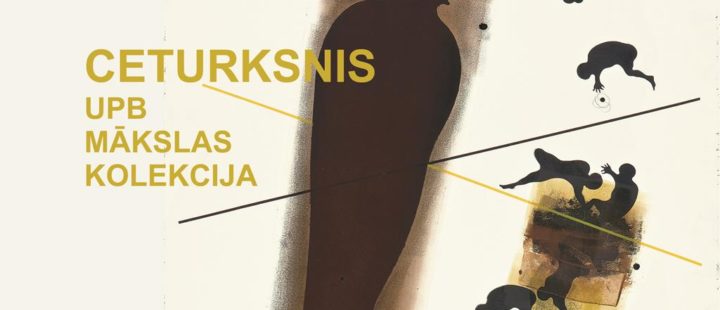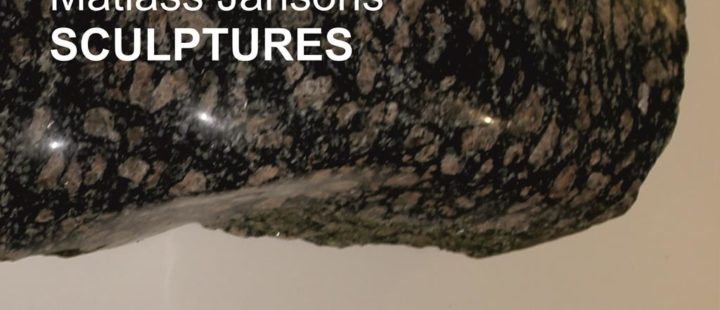Archive
UNTITLED. Latgale Art
- - 03.07.2016
For the fourth time, Daugavpils Mark Rothko Art Centre is hosting Latgale Art Exhibition bringing together artists of all media and art students from towns and communities throughout the entire region.
This year, the theme of the exhibition was determined by social affairs, the controversial and the understood, the important and the unimportant yet worth to speak about in the language of art – that is why the exhibition carries no title. 1st INTERNATIONAL PHOTOGRAPHY SYMPOSIUM
- - 03.07.2016
In today's world Photography has become one of the most noticeable quality labels in society – imaging is no longer an exclusive right of a specific trade or craft. Visual communication has achieved equality with the traditional leadership of the Spoken and Written Word. This means that responsibility of the written or spoken word also lies with all producers of visual messages and images. A VERTICAL OF MĀRTIŅŠ BUCLERS
- - 03.07.2016
The turn of the 19th and 20th century marked the history by challenges of new ideas and confrontations caused by social changes.
Photography at that time of transformations played a rather hazy yet strong role of an agent. Photography delivered to the world a new experience which led to new knowledges and awakenings.
Mārtiņš Buclers is clearly the most visible personality in the formation of professional photography's quality in Latvia in the early 20th century.
His drive substantially expanded significance of craftsmanship of light reflection capturing and understanding the power of this trade. His enthusiasm clearly affected awareness of the need for regular and systematic learning and training in this area. M. Buclers tried to put it into practice with his own example. He assumed translation of the area-specific literature, Latvianisation of terminology and publishing of handbooks and tips. Jānis Murovskis exhibition THE INCOMPREHENSIBLE FEELING OF DISTANCE?
- - 10.04.2016
“Instead of text I would go for ciphers, dots and stripes drawn with passion.” Muris
“Man is the measure of all things.” Protagoras UPB Collection of art exhibition QUARTER
- - 10.04.2016
In 2016 UPB holding celebrates its 25th anniversary. It is a Quarter of Century.
The UPB art collection is a compilation of contemporary art that expresses the primary aspiration of giving a personal insight into the realm of artistic values which are developing in modern world. This collection started fourteen years ago, back in 2002, at the UPB office in Liepaja, when the first works were purchased. Irina Ošleja In Klerkopolis?
- - 10.04.2016
The word “Klerkopolis” combines two words “klerks” and “polis” which translated from Greek means “city”. The word “klerks” [clerk] means office worker, secretary, clerk.
Denotation: an employee of a bureaucratic system of some administrative institution. Graphic Langauge of the 1969S in Latvia exhibition ON THE TRACK OF GREAT LIFE
- - 10.04.2016
the Track of Great Life. Expression of the graphic art of the 1960-ties” displays objects characteristic to that particular time in the history, resembling the once new aesthetic ideals – dominance of the so called linear-geometric style. Ideals changed along with the boom of the economy and the light industry, as well as the exploration of the Universe and the progress of science and technology. Matiass Jansons exhibition SCULPTURES
- - 08.04.2016
Matiass Jansons has graduated from the Department of Sculpture at the Art Academy of Latvia (1999). A member of Latvian Artists Association (since 2003). Juris Gagainis SHIPS CALL AT DINABURG
- - 07.03.2016
Juris Gagainis
SHIPS CALL AT DINABURG
Juris Gagainis – sophisticated artist with ambition for perfection, blessed with the poetic imagination and in perpetual search into the unknown. Le moment supreme photography artwork by Manuel Schroeder
- - 17.01.2016
Often puts the mundane, the long familiar only through unfamiliar perspectives and selection in a new light. In concert contest is memory and reality mix, particularly intense in places that are currently undergoing a change of meaning in their function.
It is the phenomenon of different qualities of perception that drives the artist Manuel Schroeder in his work. His main focus is the symbolic power of the seemingly self-evident. The project focuses on special places, whose meaning has changed in recent years. In appearance they are still marked by their former function as well as by the time their characteristic design. The selected locations are atmospheric compressed by the tension of their past and present appearance. They provide inspiration and trigger associations. In the photographic work Le supreme moment Manuel Schroeder is dealing with the reality of these places and works of expressions that match the volatility of our memories. 









